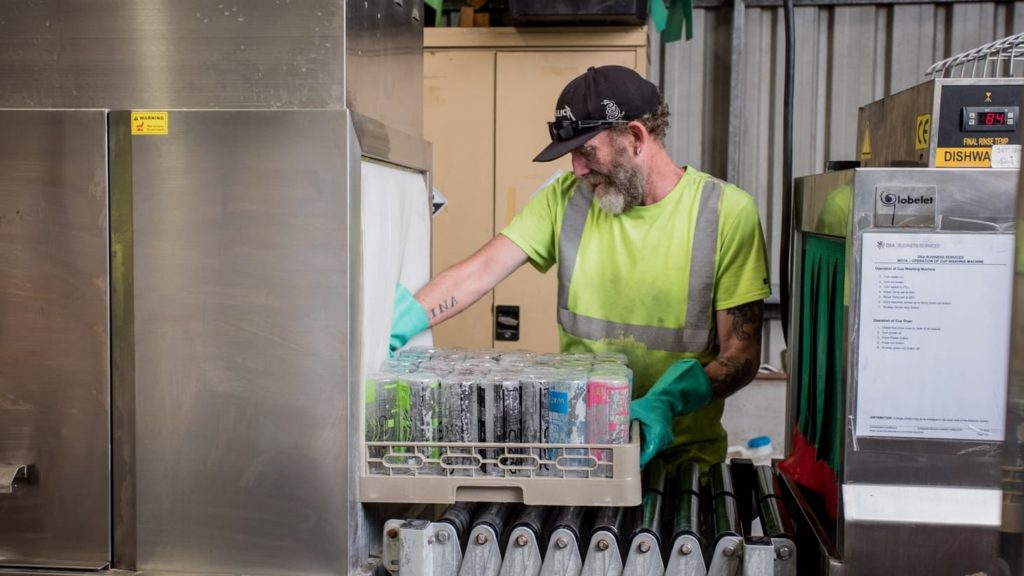Reducing Carbon Footprint at Work: 11 Ways Your Company Can Fight Climate Change

Climate change is a reality. What is your company doing to fight it?
Last year’s Intergovernmental Panel on Climate Change reported that, without unprecedented action to combat climate change, the planet is due to see average global temperatures increase to literally catastrophic levels. While the earth will keep spinning along just fine with or without us humans around to pollute it, our actions going forward can and will have permanent–and potentially terminal–consequences for life as we know it.
In its early stages, climate change has already affected how we do business. As it increases, so will it drastically increase business costs in myriad ways. With nothing less than the entire global economy at risk, our duty to act in the interests of the planet is inescapable. Forward-thinking companies have long since started taking action: as of this writing, 181 companies have joined RE 100, “a global corporate leadership initiative bringing together influential businesses committed to 100% renewable electricity.”
“The time is past when humankind thought it could selfishly draw on exhaustible resources. We know now the world is not a commodity.” ― Francois Hollande
While it’s easy to see the commitment of RE100 companies as simple altruism, they’re not only acting in defense of our planet. Though it has long been the subject of political debate, belief in climate change–and our responsibility to do something about it–is largely bipartisan. This means that by publicly acting against climate change, and working to reduce pollution in general, companies are serving not only our planet, but the interests of their customers. And those customers are motivated. Surveys have shown that consumers seek out companies who share their beliefs, so by displaying a commitment to sustainability, companies can develop a deeper, more sustainable relationship with their customer base.
There’s no time like the present to get started on the path to sustainability. Below are some tips to help your company be a better steward of the Earth, but don’t stop with these. Survey your office to find environmental advocates who might like to join a sustainability team to help you enact changes. They can do things like brainstorm office-wide volunteer programs and recruit team members to join the effort. You can go further by inviting all employees to submit their suggestions for how your company can help combat climate change. Not only will it likely result in some fresh ideas you hadn’t considered, but knowing how far your employees are willing to go to offset their carbon footprint will help you to take steps without risking their irritation or loss of engagement.

Actions your company can take to combat climate change
1. Consider switching to renewable energy.
Every day, it becomes easier for businesses to switch to renewable energy sources. For those who own their facilities, it can be as easy as installing new high-efficiency solar panels, and many have the option of switching their electricity provider to one that uses a renewable resource. If you’re stuck on an existing power grid, you still have the option of purchasing carbon offsets.
2. Increase your energy efficiency.
Halogen bulbs are so over. LED lighting lasts longer, and the newest LED lights are just as bright and use up to 85% less electricity than halogen. But don’t stop there: in cooler months, save on heating and lighting by opening up windows to let natural light supplement both. If you’re still using desktop computers at any of your work stations, switch to laptops for energy savings that will eventually offset the cost of the change. And for everything from printers to the break room fridge, energy-saving appliances are available to help reduce your electricity usage.
“We are the first generation to be able to end poverty, and the last generation that can take steps to avoid the worst impacts of climate change. Future generations will judge us harshly if we fail to uphold our moral and historical responsibilities.” ― Ban Ki-moon
3. Go paperless.
The cloud computing revolution is well underway, and it’s time you got onboard. A cloud-based infrastructure addresses both energy and resource efficiency while saving space and providing your staff with the flexibility to work from anywhere. Some cloud providers even go the extra mile by offsetting their carbon footprint.
4. Go acoustic.
Unplugged, that is. Provide your staff with time at the end of each day to unplug their computers and other electronics that drain energy even when they’re turned off. It doesn’t take much time, and it goes a long way towards reducing energy waste.

5. Book hotels that are eco-friendly.
Traditional hotels use incredible amounts of energy for everything from laundry services to air conditioning and lighting. Through efforts such as lower water consumption and LED lighting, many hotels are making the change to be more eco-friendly. Show your support, and offset your own carbon emissions, by booking business travel at these hotels. Even better, educate your employees about ways to conserve energy during their travels.
6. Adopt air-friendly air conditioning.
Installing an abundance of fans in your offices can keep even the most finicky employees feeling cool and breezy, but it’s not your only option. If your budget allows it, and especially if you’re planning to build rather than buy or rent, there are exciting new alternatives to traditional air conditioning you should consider for your building. Also, simple as it sounds, it’s worth the effort to have a professional assess your facilities for drafts. Wherever you’re losing heat or cool air, you’re reducing the efficiency of your climate control system and emitting additional greenhouse gases with no benefit.
“You cannot get through a single day without having an impact on the world around you. What you do makes a difference, and you have to decide what kind of difference you want to make.” ― Jane Goodall
7. Go plastic-free.
By eliminating plasticware from your office, including coffee stirrers and even cups and plates for those TGIF drinks and birthday cakes, you can ensure you won’t be responsible for the greenhouse gases emitted during their production or for them inevitably reaching the ocean if they’re not recycled properly. Low-cost dishes from IKEA are more attractive anyway, and dishwashers are energy efficient all on their own.

8. Work from home.
Flex scheduling and telecommuting both go a long way towards easing the stress of the usual nine-to-five workweek for your employees. They’re also great ways to reduce your company’s carbon footprint with little to no effort. Letting employees work from home even one day a week can increase your office’s energy efficiency by twenty percent.
9. Find flight alternatives.
One of the easiest ways to reduce your carbon footprint is by taking fewer flights. When longer business trips are necessary, consider getting to your destination by train. More legroom, fewer and shorter delays, and the ability to arrive at the station only a few minutes before your departure make train travel a much more relaxing option than flying. On top of a great view and comfortable trip, many train companies give you the option of paying a small fee to offset the carbon output of your trip.
“If you really think that the environment is less important than the economy, try holding your breath while you count your money.” ― Guy McPherson
10. Go Fairtrade and reduce food waste.
Fairtrade organizations are helping farmers everywhere by giving them the tools they need to fight climate change, including investment in reforestation and nutrient-rich soil development. Use their certified products and you’ll be part of the change. In addition, purchasing office snacks from local farmers reduces the fuel burned in your food supply chain, and surveying employees frequently to be sure you’re providing the right foods in the right amounts will ensure that little is wasted. There are likely even local composting programs in your area that help businesses recycle their food waste.
11. Last but not least, remember the Three R’s.
Say it with us: Reduce. Reuse. Recycle. Be sure you’re primarily reducing and reusing first and foremost, as doing so will go the furthest towards reducing your greenhouse gas emissions. When there’s no alternative, it’s time to look for recycling options. While there might be some recyclables that the waste service in your area doesn’t accept, you can partner with companies like Terracycle to keep many of those items from winding up in our oceans and landfills.

“The Earth is a fine place and worth fighting for.” ― Ernest Hemingway
While it’s fine to get started on any or all of these changes right away, it helps to first know where you stand. Every story has a beginning, after all. Having a firm grasp on your company’s environmental impact will not only give you something to measure your progress against, but also help you convey that progress to your customers and employees. To begin, check out CoolClimate.org’s carbon footprint calculator here. From an initial estimate all the way to a full summary of your organization’s environmental impact, it’s an excellent resource for measuring your company’s footprint. Or, if you’re interested in more in-depth knowledge of exactly what all this entails before you begin your estimate, check out Sustainable Business Toolkit’s full rundown of what constitutes a carbon footprint here.
Now, start planning for a more sustainable future.

